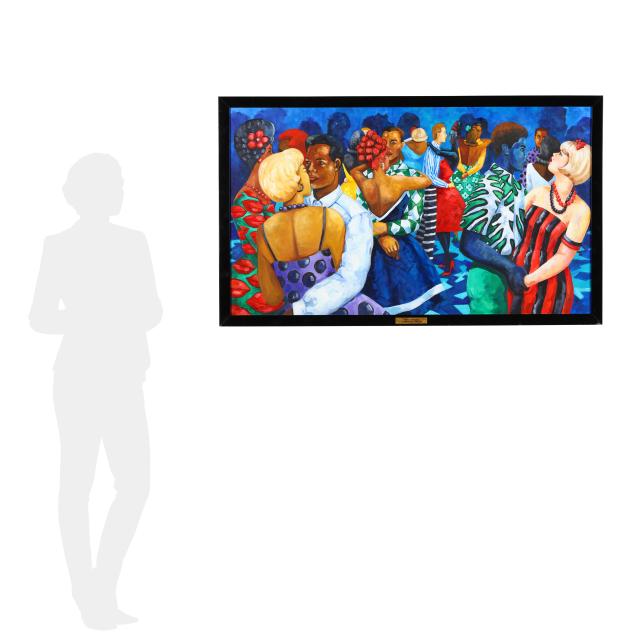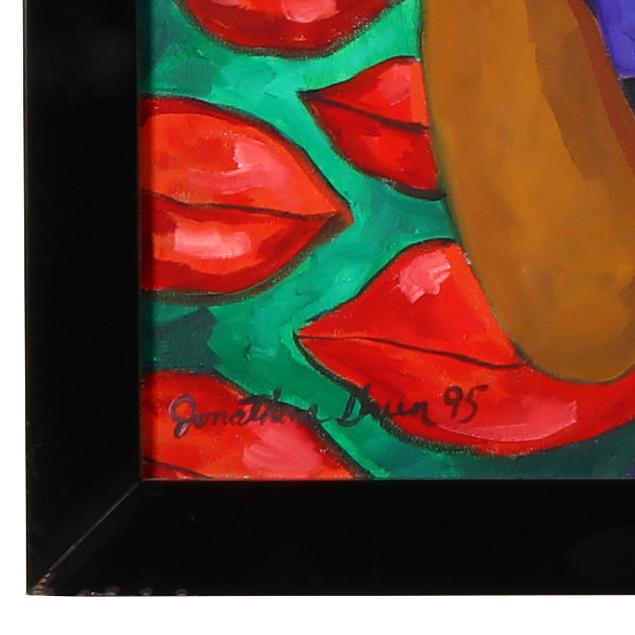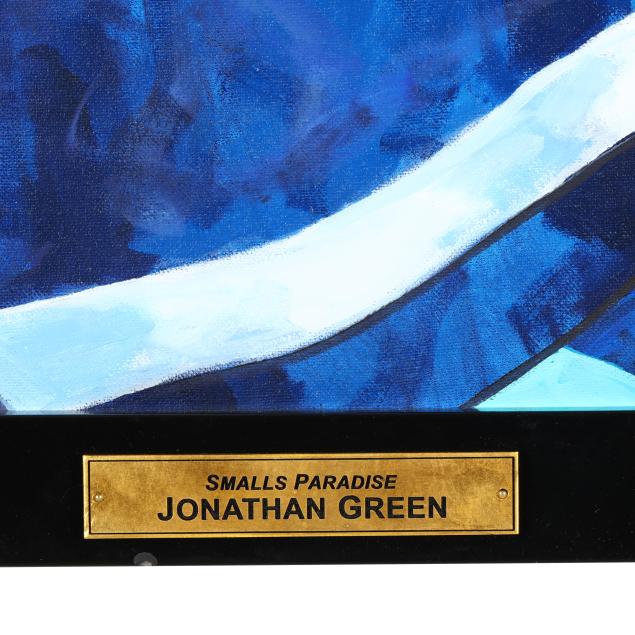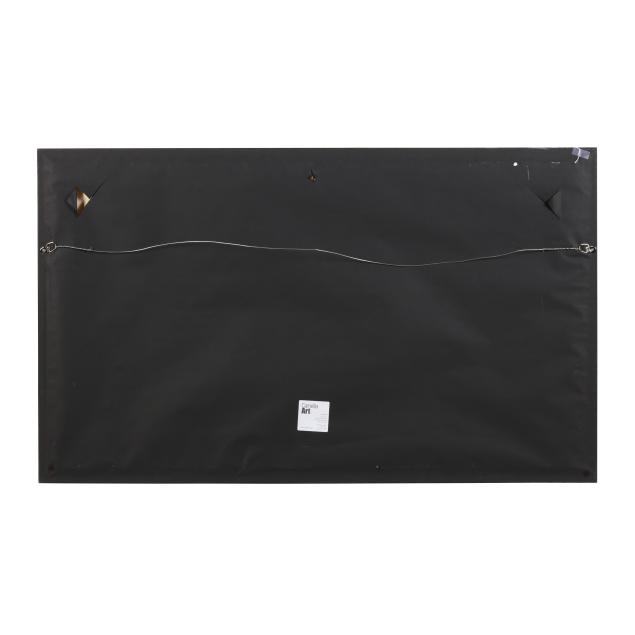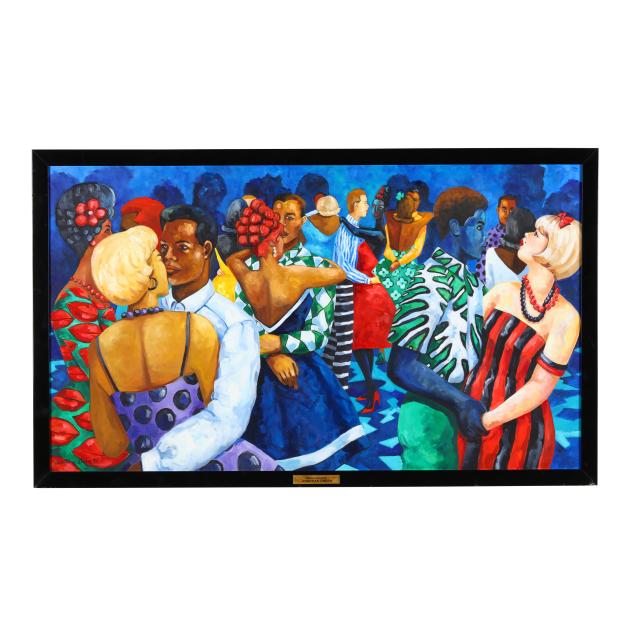
Lot 2065
Jonathan Green (American, b. 1955), Smalls Paradise
Explore more items like this one.
Visit our Fine Art Department Fine Art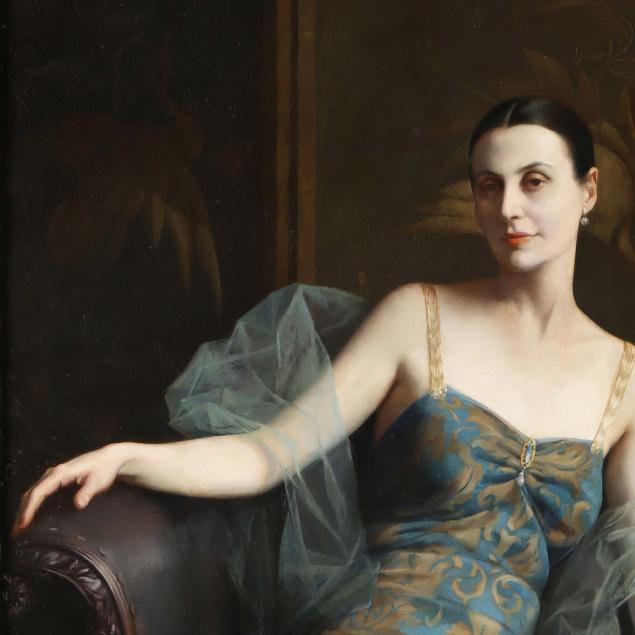
Lot Details & Additional Photographs
Stretcher size 32 x 52 in.; Frame dimensions 33 x 55 in.
Private Collection, Mount Pleasant, South Carolina
Jonathan Green is a renowned American painter celebrated for his vivid, dynamic depictions of Gullah culture in the coastal regions of South Carolina. Born in Gardens Corner, South Carolina, Green was raised in the Gullah community, a group of African Americans known for preserving their West African heritage through language, crafts, and traditions. His art, characterized by bold colors, rhythmic compositions, and an expressive, figurative style, reflects the daily lives, rituals, and landscapes of the Gullah people. Green studied at the School of the Art Institute of Chicago, where he honed his artistic skills while remaining deeply connected to his cultural roots. His work bridges the past and present, capturing the resilience and beauty of Gullah traditions in a rapidly changing world.
Green's paintings have earned widespread acclaim, appearing in major museums, galleries, and private collections across the United States. His works, often filled with themes of community, spirituality, and the natural world, celebrate African American heritage while conveying universal themes of human connection and belonging. In addition to his contributions as a painter, Green is an advocate for cultural preservation and education, using his art to promote awareness of the Gullah way of life. His vibrant imagery, inspired by both memory and history, has positioned him as one of the most important visual storytellers of the American South.
Green’s work is in the permanent collections of numerous museums, including The Morris Museum, Augusta, Georgia, The Gibbes Museum of Art, Charleston, South Carolina; The Afro-American Museum of Philadelphia; Nelson-Atkins Museum of Art, Kansas City, Missouri; University of Virginia Art Museum, Charlottesville; The McKissick Museum, Columbia, South Carolina; The Naples Museum of Art, Naples, Florida; The IFCC Cultural Center, Portland, Oregon; and many others.
Smalls Paradise was one of Harlem’s most iconic nightclubs during the Harlem Renaissance and beyond. Opened in 1925 by Ed Smalls, it was located on 135th Street and quickly became a cultural hotspot, celebrated for its lively atmosphere and progressive policies. Unlike many other clubs of the era, Smalls Paradise welcomed a racially integrated crowd and featured Black performers for both Black and white audiences, reflecting Harlem’s status as a center of African American cultural expression. The club hosted an array of jazz legends including Count Basie, Billie Holiday, and Fats Waller, helping to shape the jazz and swing movements. It was also famous for its floor shows, which included dancing waiters, chorus lines, and late-night revelry that stretched into the early morning hours.
Over the decades, Smalls Paradise evolved with the times. In the postwar era, it continued to thrive under new ownership, including NBA star Wilt Chamberlain in the 1960s, who attempted to rebrand it for a younger crowd. The club also adapted to shifts in popular music, from jazz to rhythm and blues, and eventually funk and soul. Despite these efforts, it could not escape the economic and social changes that affected Harlem in the latter half of the 20th century. Smalls Paradise closed in the 1980s, but its legacy endures as a symbol of Harlem's vibrant nightlife and cultural innovation, a place where music, dance, and community converged during one of America’s most dynamic cultural periods.
Very good condition, slight age cracking at the center of the work, minor frame wear.
